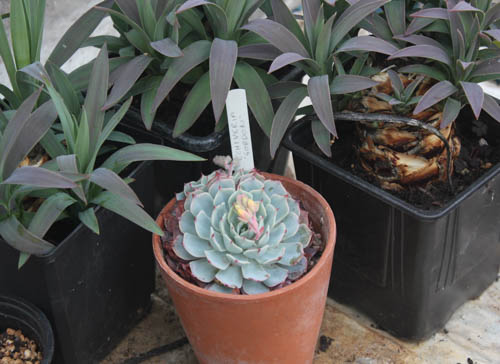
Although we should be looking forward to May, it’s impossible not to comment on April’s extraordinary weather where conditions were totally alien gardeners in warmer parts of the UK. First sowings were abandoned or delayed and the ground was too cold and dry for transplanting. I have never known anything like it!
First of all, don’t panic. Northern gardeners who are more used to this, regularly produce excellent harvests, even in a shorter growing season – a friend of mine from Blackburn always has a traditional sowing date for vegetables was 10th May. Now is the time you will be amply rewarded for investing in a greenhouse, second sowings will germinate quickly and you will soon catch up on some lost time and harvest will be a little later. Rain which is forecast early in the month will moisten the soil, then warm the ground with cloches or black polythene for later transplanting from the greenhouse. On heavier soils or those with a dry crust on the surface, moistening the surface before the onset of rain ensues that any that rainfall will be absorbed, not run off.
Tie in the main stems of tomatoes, peppers and aubergines as they grow to support growing stems using soft twine. Remove the side shoots as they appear.
Start watering succulents in the cold greenhouse.
Sow: outdoor cucumber, marrow, squashes, pumpkins individually on edge in 7.5cm pots plus French and Runner beans and Sweetcorn in gentle heat in peat free multipurpose compost in a propagator at 18-21C, label and water with tepid tap water. They will germinate quickly. Resow any earlier crops that were lost, ensure pots are clean before use, warm compost in a propagator or leave it for 24 hours in your greenhouse before sowing.
Continue to prick out and pot on seedlings, gradually increasing the pot by one or two sizes each time until they reach the final pot size or are large enough to ‘harden off’ and transplant. (Don’t put a small plant into a big pot and hope that it grows into it. They don’t like big shoes!)
Increase the space between greenhouse plants as they grow to prevent disease, and tackle early infestations before they become established; they are easier to control when populations are small. Check plants daily for pests and diseases as you water.
Once the danger of frost has gone, ‘Harden off’ bedding and vegetable plants before transplanting. Ventilate your greenhouse a little during the day and close it at night, increasing ventilation gradually over time to increase hardiness but avoiding draughts at all costs. After 3-4 days, move your plants to a cold frame or the base of a sheltered, south facing wall, hedge, or somewhere sheltered during the day, protected for the first few days a couple of layers of fleece and bring them into the greenhouse at night for a week, using a single layer of fleece for the first part of week two. After about 10 days, depending on the weather, remove the fleece during the day and leave plants outdoors at night if it’s mild. Leave them uncovered towards the end of the third week, before finally planting out and adding slug protection.
Happy Gardening, Matt










